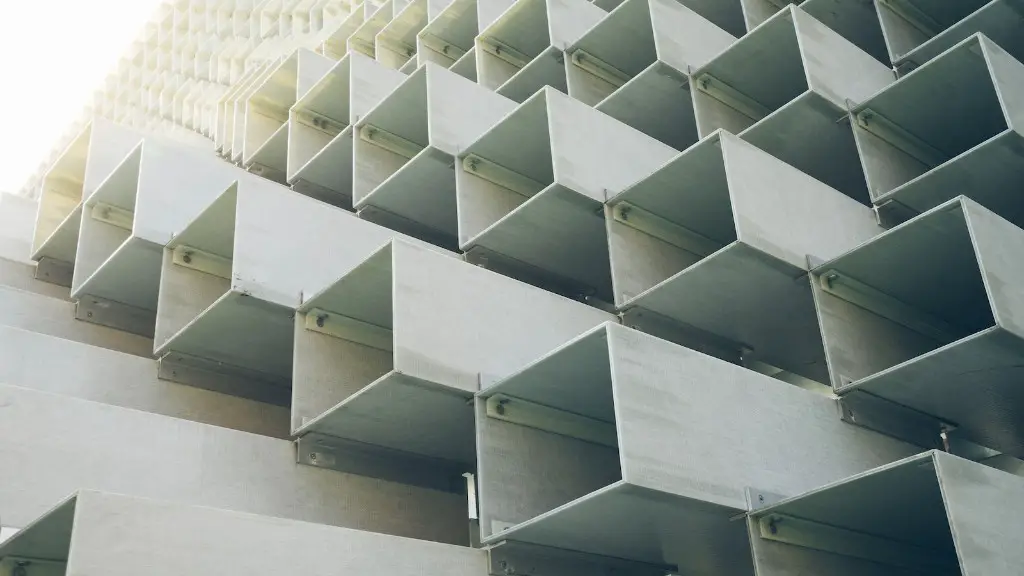What Is Modern Architecture?
Modern architecture refers to design that has been produced since the early 19th century. It is most heavily associated with the iconic structures of the Bauhaus school built in Germany during the first half of the 20th century. Although there have been many different interpretations of modern architecture, it is generally characterized by a focus on clean, geometric lines, an emphasis on simplicity, and an interplay between volume and mass. It is also often associated with technological advancement and the development of modern materials such as steel, concrete, and glass.
The Problem With Modern Boring Architecture
Modern architecture has had a long history of producing structures that are aesthetically uninspiring. This can be attributed to a lack of creativity and imagination among modernist architects. Rather than attempting to draw on the local culture, many modern buildings simply imitate existing buildings and do nothing to capture people’s interest or imagination. Furthermore, the obsession with technologies and building materials has often turned buildings into nothing more than hollow shells. The lack of attention to the environment and sustainability has led to a severe dearth of green buildings – an especially egregious example of architecturally boring architecture.
The Impact of Boring Modern Architecture
The problem with boring modern architecture has had a profound impact on cities and towns around the world. Many modernist buildings are considered eyesores, and their impact on the local environment is often extremely negative. They frequently clash with the existing context of their surroundings, making them out of place and undermining the history and culture of the area. Furthermore, they often encourage developers to build more mono-function buildings, rather than providing the infrastructure for communities to thrive.
Solutions for a More Interesting Architecture
As boring modern architecture has become a serious issue, various solutions have been proposed in order to make buildings more aesthetically pleasing and engaging. One such solution is to integrate local culture into the design of a building. By utilizing local histories, customs, and art, architects can produce structures that are engaging and that make a positive contribution to their respective locales. Additionally, the use of sustainable materials and energy-saving technologies can be employed in order to create greener buildings that reduce their environmental impact. By encouraging more creative and thoughtful designs, modern architecture can be made more interesting.
Innovative Examples of Modern Architecture
Despite the ubiquity of boring modern architecture, there have been some incredible examples of modern buildings that have achieved a level of beauty and inspiration that is often lacking. The Los Angeles County Museum of Art (LACMA) is one such example of a building that embraces modernist principles while still honoring the culture of the local area. The Guggenheim Museum in Bilbao is another example of a stunning modern building that was designed to fit into the existing context. These buildings show that modern architecture can still be interesting and engaging if it is done right.
The Importance of Quality Architecture
As can be seen, boring modern architecture has been a major problem around the world. Fortunately, there are solutions that can help invigorate the design process and produce aesthetically pleasing buildings that can enliven the built environment. It is essential to continue to develop innovative and creative designs in order to improve the quality of architecture that is being produced. Ultimately, quality architecture can make a huge contribution to improving cities and towns around the world.
Aesthetic Quality in Architecture
The aesthetic quality of architecture is often overlooked, leading to the production of faceless buildings that fail to integrate into local cultures. In order to create an attractive and pleasing architecture, architects need to draw upon local histories, customs, and art. By doing this, they can produce structures that capture the imagination and engage people in meaningful ways. Moreover, introducing sustainable materials and technologies can ensure that modern architecture respects the environment and reduces its impact.
The Role of Education in Modern Architecture
A key element in preventing boring modern architecture is the role of education. By teaching the next generation of architects and builders the importance of creative and thoughtful design, we can ensure that the architectural landscape is more interesting and innovative. Furthermore, by developing curriculums that introduce students to the principles of sustainable design and emphasize creative design solutions, we can help produce an architecture that embraces its surroundings and contributes to local culture.
The Growing Role of Technology in Architecture
Technology has grown to become a critical part of modern architecture. Technologies such as 3D printing, augmented reality, and virtual reality can be used to produce stunning designs that could not be achieved without technology. Additionally, the use of sensors and software can help create buildings that are more responsive to their environment and energy demands. By incorporating technology into the design process, architects can create innovative, interesting buildings that incorporate modern materials and energy efficiency.
The Influence of Social and Cultural Context on Architecture
Social and cultural context plays a huge role in the design of a building. In order to ensure that a building fits into its surroundings and contributes to the local environment, architects need to consider the social and cultural context of the area in the design process. By understanding the values and beliefs of the area, architects can create buildings that reflect and embrace their surroundings. This will create a more interesting and individualistic architecture that can better serve its local community.


